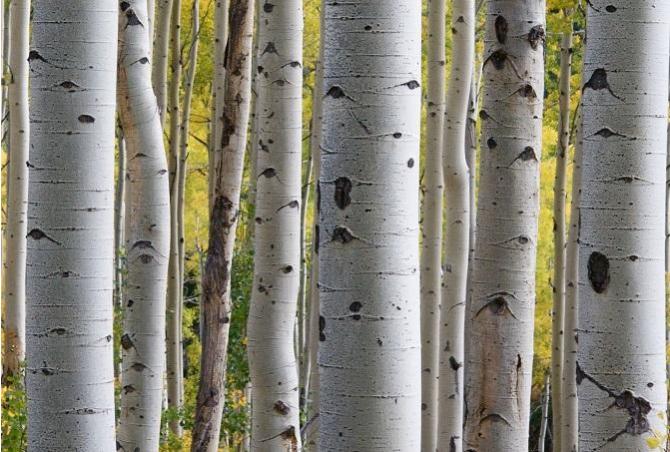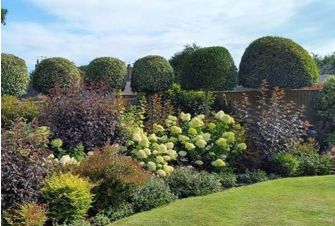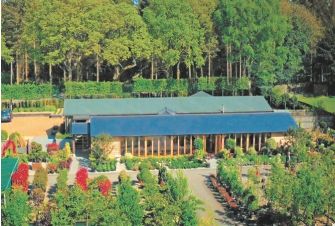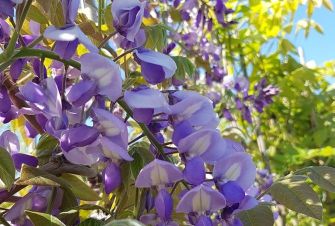Trees that create impact in gardens and the wider landscape
Trees and shrubs featuring multiple stems are relatively new to the UK. But the use of these multi-stemmed trees has grown exponentially over the last decade or so. This has been largely designer-led and promoted thanks to flower shows such as RHS Chelsea where televised coverage brings the latest garden design trends straight into the living room.
Everyone loves a beautiful tree but they take time to fill the allotted space within a garden. Planting a tiny sapling can test the patience of those who want to experience the impact of a glorious tree. Purchasing a multistem tree, however, brings instant impact.
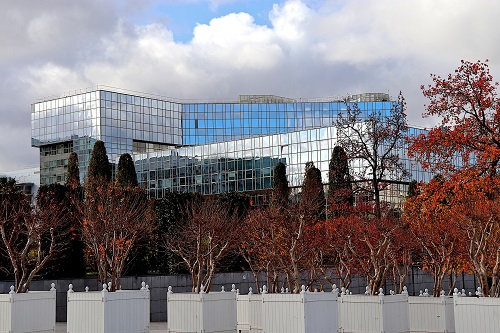
The multi-stemmed trees within their stylish containers create a true wow factor.
What do we mean by multistem?
Most trees grow from a single stem, unless they are nibbled by animals or coppiced and skilfully pruned by hand. The regrowth produces multiple stems at the point of the cut. This is an age-old form of sustainable woodland management known as coppicing. It quickly provides wood for useful products such as poles and stakes. Not every type of tree will respond well to coppicing, but many deciduous forms are highly successful including birch, hazel, willow and chestnut. Others such as beech and hornbeam can be coppiced but they are very slow to respond. Evergreen trees and traditional hedging plants can also be cultivated as multi-stems with great success.
The resulting tree grows from multiple, smaller stems. A multi-stemmed tree can have two or more stems growing from one root. The growth then becomes broader, enhancing the overall shape and form of the tree. This means that planting a multistem specimen immediately provides an architectural structure which can be very pleasing to the eye. For people who don't want to wait, mature trees and multistemmed forms provide a perfect solution. They have a more open structure near the base and genereally have a greater mass of foliage, enhancing the overal attributes of the species.
In addition, no two multi-stem trees will ever be the same because each grows in a variable way. It all adds to their charm and these unique specimens are now in high demand.
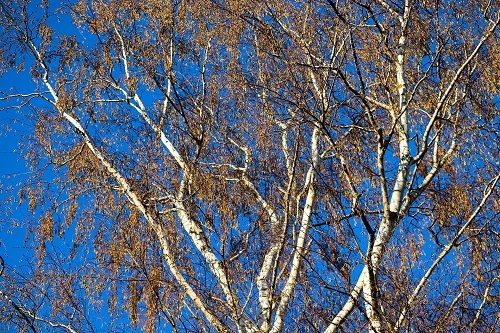
What are multi-trunk trees?
Whereas multi-stemmed trees generally grow from one root system, trees with multiple trunks tend to each have their own roots. They are normally separate trees that have been planted into the same pot. Being grown together in such close proximity creates an architecturally pleasing form. Birch, including the native Betula pendula and the white stemmed birch, Betula utilis jacquemontii, respond very well to growing in this way. Each trunk adopts an upright shape which is clear of side shoots until the canopy. This forms into a single cloud arising from the vertical trunks. They can be viewed as living sculptures within the garden or wider landscape.
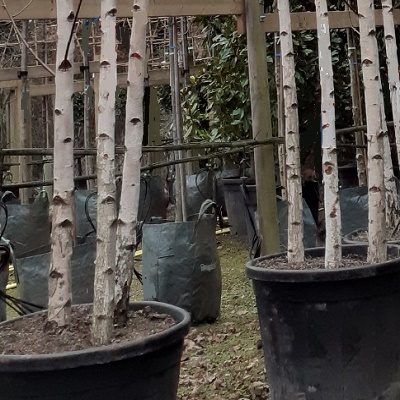
Six reasons to plant a multi-stemmed tree in your garden
- It forms an eye-catching specimen which can be viewed from many different angles
- For its artistic form and unique structure that varies far more than a standard tree
- The open structure at the base means that you can look through the stems. They form a partial barrier rather than a solid screen
- A multistem tree is a more natural shape than a standard tree which will have a clear, straight trunk. In nature, most trees have side branches lower to the ground. Multi-stemmed trees are highly suitable for a garden that includes naturalistic planting and they look very stylish within contemporary settings including urban courtyards.
- A tree grown in this way has a greater foliage mass than those growing on a single stem. They generally, therefore, have a higher environmental rating
- This stylish shape makes a particular feature of the bark and stems, which often display remarkable colour and texture. These are features that are often overlooked on a standard tree
Popular trees available as multistems
As demand for these architectural shapes increases, so does the range of varieties that are available. One of the most widely-seen is Betula utilis, the Himalayan birch tree. This is because of the strikingly white bark colour which looks even better in winter when there is little else happening in the garden.
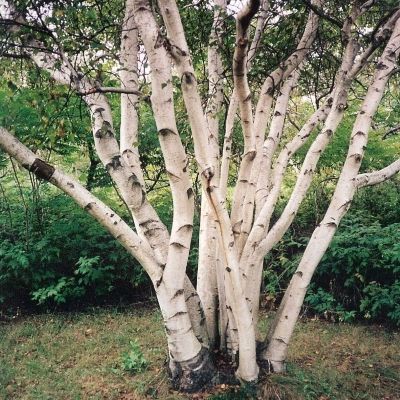
Prunus serrula, the Tibetan cherry with its mahogany-coloured bark, makes an excellent architectural feature as a multi-stem, particularly when set against a plain backdrop.
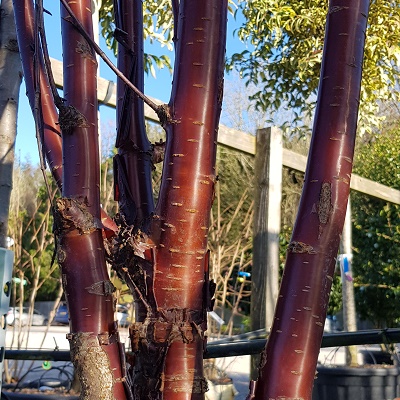
Amelanchier lamarckii, the snowy mespilus tree has something for all seasons: great winter structure because of the interesting, architecturally-shaped stems; white star-shaped flowers in spring; black berries later in the season and then excellent autumn leaf colour. This small tree or large shrub has become very popular for use as a feature within courtyard gardens.
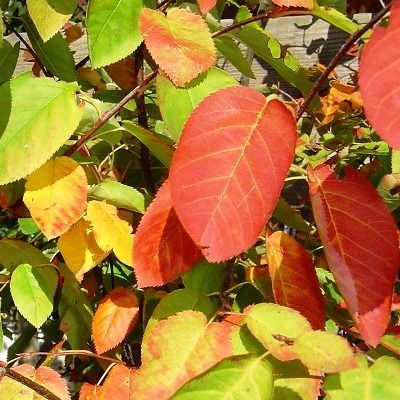
Prunus cerasifera 'Nigra', the purple-leafed plum, produces pink spring blossom and then bronze-coloured new foliage which darkens to rich purple. This is a great multi-stemmed tree which looks even better when planted against a lime-green backdrop.
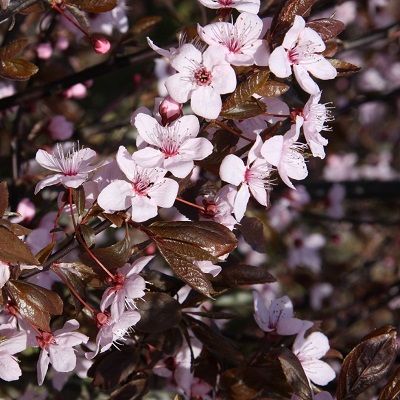
Laurus nobilis, the bay tree, makes a stunning multi-stem form which looks just as good in winter as it does during spring and summer. What's more, evergreen multistems provide excellent screening advantages above a fence-line because of the wide canopy of leaves.
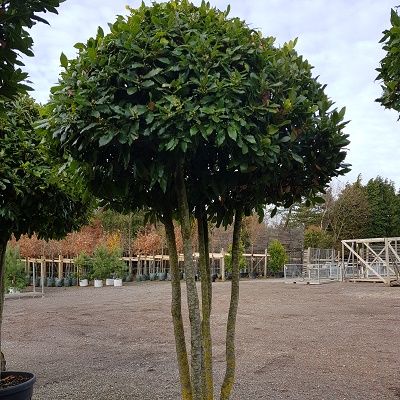
One of the more unusual multi-stemmed evergreens is Pinus sylvestris 'Watereri', a compact Scots Pine which looks stunning when grown in this form.
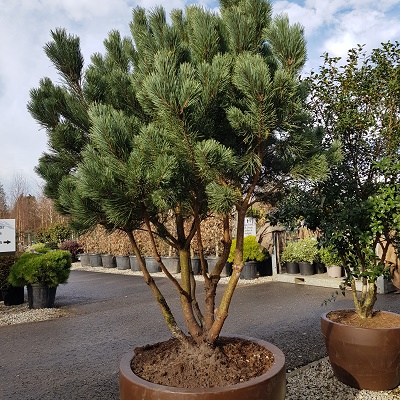
Of course, there are many more tree species grown as multi-stemmed specimens. Demand looks sets to continue and these will increase in number as time progresses. These trees take time to grow and be nurtured, but they are well worth the effort!
Visit the English Woodlands website to see what's currently in stock. Most trees can be delivered across much of the UK.

